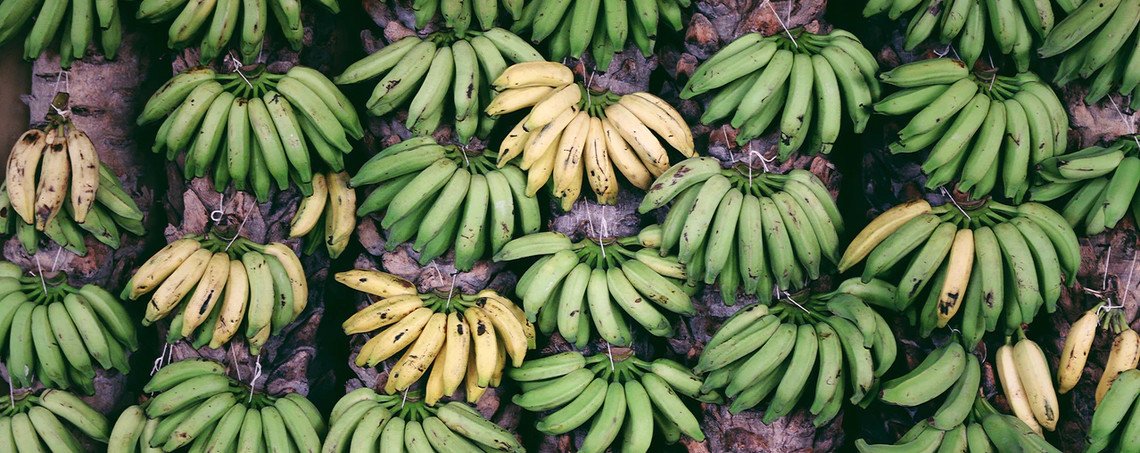Banana
PROPERTIES OF BANANA
Banana fibers are:
- a natural sorbent
Banana fibers in their natural state produce a highly sorbent material. The key factor is the high porosity and natural capillary action of the fiber, allowing it to absorb oil. Banana fiber is a super-sorbent, in that less fiber product is needed to remediate any spillage. Banana fibers can be used in sorbent socks, pillows and booms, or as loose fiber to clean up land-based spills.
- a base material for bioremediation and recycling
Organic contamination is frequently treated through 'bioremediation', a method that employs bacteria to 'eat' the contamination. In order for these bacteria to survive within the contaminated environment, they must be provided with a natural substrate material on which they will thrive. Banana fiber provides this medium and can be used in the remediation industry as a natural bioremediation agent.
- a natural water purifier
Banana fibers have already been tested for use as a filtration agent in the treatment of wastewater, which is often contaminated with oils and other organic materials. The natural affinity of banana fiber to oils and organics, and its tendency to repel water, makes it a good natural alternative filtration agent for industrial and municipal waste treatment.
- a base material for the paper and pulp industry
The use of banana pseudostem has been investigated for the production of craft cellulose, to be whitened for use in the manufacture of special paper used in the restoration of documents. The raw material used, at nearly 94% humidity, is obtained from commercial banana plantations. Paper made out of banana fiber is reported to be of high strength and is used to make tea bags and currency notes.
- a substrate in the mushroom industry
A study conducted at the Instructional Farm, Vellayani, India, regarding the suitability of banana pseudostem for mushroom cultivation, indicated that banana pseudostem alone and in combination with paddy straw produced comparatively higher mushroom yields than paddy straw alone.
- a rawmaterial in handicrafts and textiles
A variety of products have been made from banana fibers in the Philippines. The banana fibers were reported to be elegant and highly versatile. As they do not crumple easily, these fibers have been used in the manufacture of dress materials. The fineness of texture depends on the quality of the fiber used. The material has a beautiful sheen and is used for making wedding gowns and barongs. Hand-extracted fibers have been used to produce handbags, wall hangings, table mats and other fancy articles.
Banana fiber is classified as a hard fiber, based on the fact that it includes strands of whole vascular bundles, including xylem, phloem and true fibers. They have more lignified and rougher surface fibers than cotton and kapok and soft fibers such as flax, ramie, jute and hemp. The principal constituents of banana fiber are cellulose (also called cellulose-1) intermingled with hemi-cellulose (polysaccharides) and lignin.
The inherent drawback of banana fiber is its poor quality and higher irregularity, owing to the multi-cellular nature of the fibers. The individual cells are cemented with lignin and hemi-cellulose and thus form a composite fiber. Banana fiber is classified as medium quality fiber and performs very well in combination with other fibers for making fine articles like handicrafts, currency, etc.
Below a table that compares various materials with banana fiber:
| material | banana | sisal | pineapple |
| density (g/cc) | 1.35 | 1.45 | 1.44 |
| volume resistivity at 100 volts | 6.5 - 7 | 0.4 - 0.5 | 0.7 - 0.8 |
| micro-fibrillar angle (°) | 11 | 10-22 | 14 - 18 |
| width (μm) | 80 - 250 | 50 - 200 | 20 - 80 |
| cellulose lining content | 65/5 | 67/12 | 81/12 |
| elastic modus | 8 - 20 | 9 - 16 | 34 - 82 |
| tenacity (cN/m²) | 52 - 75 | 56 - 64 | 41 - 162 |
| elongation (%) | 1.0 - 3.5 | 3 - 7 | 0.8 - 1.6 |

